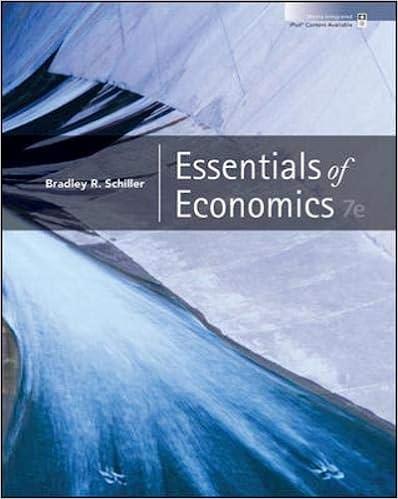Question
First, define the yield curve. Then, do some research and determine the current state of the yield curve, and how it has changed recently.Here is
First, define the yield curve. Then, do some research and determine the current state of the yield curve, and how it has changed recently.Here is a good resource for tracking the yield curve:
https://www.treasury.gov/resource-center/data-chart-center/interest-rates/pages/textview.aspx?data=yield
Is the yield curve flattening, becoming inverted, or steepening?Discuss what economic forces might be leading to the recent changes in the yield curve, and what these changes might mean for the near-term future of the economy.Given the current unprecedented economic circumstances this may be a challenging question to answer.Think of it as a "thought experiment",for which there are no wrong answers.
The 2-month constant maturity series begins on October 16, 2018, with the first auction of the 8-week Treasury bill.
30-year Treasury constant maturity series was discontinued on February 18, 2002 and reintroduced on February 9, 2006. From February 18, 2002 to February 8, 2006, Treasury published alternatives to a 30-year rate. See Long-Term Average Rate for more information.
Treasury discontinued the 20-year constant maturity series at the end of calendar year 1986 and reinstated that series on October 1, 1993. As a result, there are no 20-year rates available for the time period January 1, 1987 through September 30, 1993.
Treasury Yield Curve Rates:These rates are commonly referred to as "Constant Maturity Treasury" rates, or CMTs. Yields are interpolated by the Treasury from the daily yield curve. This curve, which relates the yield on a security to its time to maturity is based on the closing market bid yields on actively traded Treasury securities in the over-the-counter market. These market yields are calculated from composites of indicative, bid-side market quotations (not actual transactions) obtained by the Federal Reserve Bank of New York at or near 3:30 PM each trading day. The CMT yield values are read from the yield curve at fixed maturities, currently 1, 2, 3 and 6 months and 1, 2, 3, 5, 7, 10, 20, and 30 years. This method provides a yield for a 10 year maturity, for example, even if no outstanding security has exactly 10 years remaining to maturity.
Treasury Yield Curve Methodology:The Treasury yield curve is estimated daily using a cubic spline model. Inputs to the model are primarily indicative bid-side yields for on-the-run Treasury securities. Treasury reserves the option to make changes to the yield curve as appropriate and in its sole discretion. See ourTreasury Yield Curve Methodology pagefor details.
Negative Yields and Nominal Constant Maturity Treasury Series Rates (CMTs):At times, financial market conditions, in conjunction with extraordinary low levels of interest rates, may result in negative yields for some Treasury securities trading in the secondary market. Negative yields for Treasury securities most often reflect highly technical factors in Treasury markets related to the cash and repurchase agreement markets, and are at times unrelated to the time value of money.
At such times, Treasury will restrict the use of negative input yields for securities used in deriving interest rates for the Treasury nominal Constant Maturity Treasury series (CMTs). Any CMT input points with negative yields will be reset to zero percent prior to use as inputs in the CMT derivation. This decision is consistent with Treasury not accepting negative yields in Treasury nominal security auctions.
In addition, given that CMTs are used in many statutorily and regulatory determined loan and credit programs as well as for setting interest rates on non-marketable government securities, establishing a floor of zero more accurately reflects borrowing costs related to various programs.
For more information regarding these statistics contact the Office of Debt Management by email at d..t@do.treas.gov.
For other Public Debt information contact (202) 504-3550
Step by Step Solution
There are 3 Steps involved in it
Step: 1

Get Instant Access to Expert-Tailored Solutions
See step-by-step solutions with expert insights and AI powered tools for academic success
Step: 2

Step: 3

Ace Your Homework with AI
Get the answers you need in no time with our AI-driven, step-by-step assistance
Get Started


